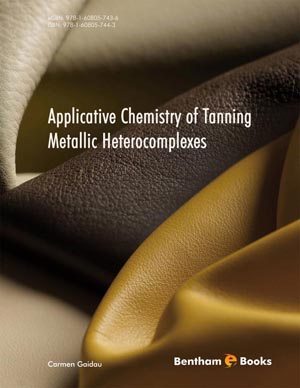Abstract
Tanning using trivalent chromium salts underwent an evolution marked by the need to obtain technical performances for the leathers at first and then to limit the penetration of chromium in the environment by means of wastewater or solid waste. The evolution of methods to reduce environmental pollution with trivalent chromium salts included general environmental principles on advanced absorption of chromium, partial replacement of chromium, recycling, recovery and total replacement of chromium. Advanced technologies for exhaustion of chromium from effluents are based on the development of technological conditions favorable to absorption of chromium above the accepted level of concentrations by osmotic balance between the two environments, hide and tanning bath. Partial chromium replacement technologies are probably the most studied methods of reducing the use of chromium as tanning metal. The great diversity of variants proves that there is no imposed variant as of yet in the industry. Recycling and reuse of chromium are methods that require additional investment in facilities for recycling used tanning solutions or for precipitation and dissolution of chromium salts. The advantages consist in reducing environmental pollution and chromium consumption, while disadvantages are related to laborious analytical control and quality of leathers obtained, which is not at the same level as that obtained by using basic salts with a consistent quality. The newest way to reduce environmental pollution by chromium salts is wet-white tanning, which implies a pretanning with chromium-free materials, mechanical processing by splitting and shaving followed by tanning and retanning with chromium salts or syntans. The organic nature of chromium-free wet-white versions is the main advantage, but it also distances itself from the traditional, mineral character of natural leather. In this respect, the approach of tanning metallic hetercomplexes provides both classic features of mineral leathers and reduces environmental pollution.
Keywords: Advanced exhaustion, Chromium replacement, Chromium reuse, Chromium recovery, Wet-white technologies.






















